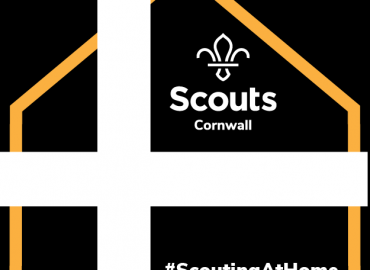Getting Back together safely
The restart process may be a little bit daunting but we are here to help you out. Leaders are required to follow this five-step process, which guides you through all of the information you need to know to get your section back together safely.
Framework: The Scouts Framework is aligned with Government-approved guidance for the youth sector developed by the National Youth Agency. This framework will apply in every nation within UK Scouting and walks through:
- the permissions process for restarting any face-to-face activity
- the key considerations to be ready to restart face-to-face activities and how these will be phased
- legal and liability conditions
- key control measures for everyone to follow
- I’ve read and understood the current Scouts framework for restarting face to face activities.
- I understand the process as a leader I need to go through and what tasks need to be completed.
- I’ve consulted with my leadership team and understand the resources we have available to plan for face to face activities.
As with any Scouts activity, planning is key, so this step works you through the various things you need to consider as part of your planning.
Your volunteer team - If you haven’t done so already, it is vital that you make contact with your team. You need to ask if they are ok and happy to return to scouting. Keeping the team engaged is vital. If you need support or guidance on how to re-engage your team then check out our guidance
Meeting places and travel - Finding the right place to meet is vital. You may be restricted to outdoor venues, as you may not be able to use your normal meeting place. The where to meet and how to get there guidance supports you with finding a suitable meeting place, making sure it’s safe and also looks at how you get your members there safely.
Protecting everyone - Keeping everyone safe is key, so we’ve pulled together the key information on how to protect ourselves and others. In this guidance, you’ll find information on how you support those more vulnerable, including how you keep Scouts accessible to those who can’t attend your face to face meetings.
Programme basics - What programme you deliver will be influenced by the space you have available, who you have to lead it and any other restrictions which are in place, but don’t worry, as part of the process for getting approval you don’t need to submit your whole programme or the details of it, just know roughly what kind of activities you will offer and where so that you can choose the right locations in your risk assessment.
Incidents and first aid - Don’t forget that as well as planning to keep things safe you need to have plans for what to do if something doesn’t go to plan, so we have guidance to support you with your first aid provision, what to do if someone gets COVID and managing incidents.
Risk assessment - Now that you’ve reviewed the guidance for getting back together safely you should have identified how you will operate in this new Scouts environment, so work with your leadership team to document your risk assessment. We’ve created COVID-19 Risk assessment tools which include a COVID restart risk assessment video and some template risk assessments to help you with this. Moving to Yellow - COVID-19 restarting face-to-face Scout risk assessment template, Moving to Amber - COVID-19 risk assessment template. If you are thinking of getting your leadership team together check out the guidance for getting adults involved again.
Getting approval - Your risk assessment once complete needs to be supported by your GSL and Group Executive, they need to know that you plan to return, then it is submitted for approval to the District. This is done through an online process, this explained in the approval process for restarting.
Download our COVID-19 restart checklist to help you see that you've considered everything, ahead of getting your request for restart approval submitted.
By the end of the plan step you should have completed the following:
- I've read the guidance on finding a suitable place to meet and getting my group there safely.
- I understand the basic principles for planning a COVID safe programme, including how to protect everyone involved and supporting vulnerable members.
- I understand what to do if something goes wrong, including the provision of first aid, responding to an incident and someone contracting COVID within the section.
- I've developed a risk assessment for restarting by Section / Group and understand the process of getting this approved.
Setting expectations - A key part of getting back to face-to-face Scouts is to make sure everyone knows what’s expected and how the meetings will be managed safely. Make sure you speak to parents and carers – we’ve provided some example letters which you can download from the guidance in communicating with people.
Members needs and vulnerabilities - Make sure you check what support all your members need. Circumstances may have changed during the time since you last met so make sure you ask. We’ve got guidance for how to support those more vulnerable at this time.
Briefing young people - Young people will also need to know what’s going to happen when they return, what will be the same as before and what will be different. Perhaps use one of your online meetings to explain what will happen.
Consent - You’ll also need to gain consent from parents for their child to return. We’ve got some guidance on protecting ourselves and others. You'll need to get written consent from parents/carers once they’ve been informed of how COVID-safe Scouts will be running; this consent can be gained through a variety of methods such as email, text, and OSM, but needs to be stored. When there’s a significant change in how you’re operating, like moving from outdoors to indoors, you should update parents and get their consent to move to this new location. Don’t forget Explorer Scout Young Leaders are young people, so consent’s needed for them to restart their activities supporting sections.
By the end of the Communicate step, you should’ve completed the following:
- I've included the whole leadership team in the planning and preparation for returning to face-to-face activities (including Young Leaders).
- I've communicated our plans and consulted with parents, carers and young people.
- I have a process for gaining consent from parents/carers for young people to return.
- I have plans for how we’ll support those with additional needs.
- I've considered our plans and how this will look to the public, and how we’ll respond to challenges.
Planning your programme - Now you have your plans approved and have spoken to everyone to make sure they’re ready to return, it’s time to get your programme up and running. So this is no different from usual, make sure you have a balance of activities and keep them socially distanced.
Socially distanced activities - Read the planning a safe and enjoyable programme for details on how to do this, as well as the COVID-19 safe programme ideas.
Meeting in different locations - You may find some of your activities will be in a different location to the one you use normally, so make sure you think about where to meet and how to get there.
Hear from leaders about their experiences of getting back together with their Section.
By the end of the Programme step, you should’ve completed the following:
- I understand that the specifics of my programme don’t need to be approved through the restart process, but have considered what this will look like and involved young people in its development.
- I've considered how we’ll get people to activities if they’re not in our normal meeting place or locality.
- I've read specific programme guidance for the activities I plan to run and explored the socially distanced programme ideas on the programme planning tool.
Once you’re up and running - We know things can change very quickly, which is why it's important to review and evaluate the safety of your group regularly. It’s also important to work with your leadership team to review any current plans and to work towards moving to the next readiness level if safe to do so.
Reviewing your risk assessment - As with any risk assessment, you’ll need to dynamically review (and keep reviewing) the situation as things change. If significant new risks are identified and added to the risk assessment, this will need to be submitted for re-approval. If existing risks are updated, the risk assessment shouldn’t require re-approval; this would be things such as changes in the maximum number of people present, changes in arrival procedures and hygiene arrangements. Examples of new risks would include meeting in a very different environment, moving to meet indoors, or introducing overnight/residential activities. These items will need to be added to the existing risk assessment, or raised as a new risk assessment document, and submitted for approval.
By the end of the What to do next step, you should’ve completed the following:
- I understand that plans can change and will need to be reviewed.
- I have a plan to work with my leadership team to review our current plans and to plan to move to the next readiness level.
Additional Resources
- The Framework
- Where to meet and how to get there
- Running Scouts as part of the School curriculum
- Keeping our buildings safe and secure
- Planning a safe and enjoyable programme
- Advice on adapting activities
- COVID-19 safe programme ideas
- Protecting ourselves and others
- Knowing what to do if something goes wrong
- Guidance for getting adults involved again
- Guidance on reopening campsites and activity centres
- Doing the DofE
- Communicating with people
- COVID-19 restart checklist
- Nights away and international travel
- COVID safe first aid training
Tools to help with your risk assessments:
COVID-19 Risk Assessment templates:
Still not sure where to start?
Then get in touch and we will do our best to get you moving in the right direction.


